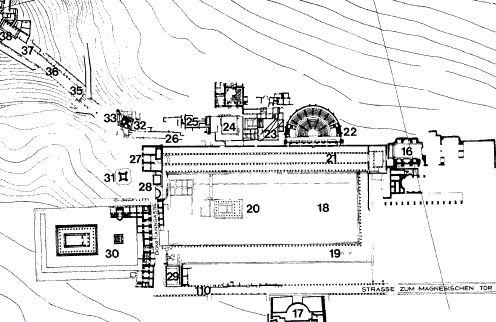In the sixth century B.C.E. , it settled in the neighborhood of the Artemis Temple. Water was supplied to Ephesus from springs at different locations. In addition, water-well cisterns supplied water to the city. Water for the great fountain, built during 4–14 A.D., was diverted by a small dam at Marnss and conveyed to the city by a 6-kilometer-long (3.7-mile-long) system consisting of one larger and two small clay pipelines.
The latrine, which is a public toilet, was built in the first century C . E . at Ephesus. The toilets were placed side by side with no partition. In the middle was a square pond, and the floors of the latrine were paved with mosaics.
..Baths were also unique in ancient cities, such as the second-century C . E . baths in Ephesus, which had a salon and central heating. The first such building had three floors as well as a hot bath ( caldarium ), a warm bath ( tepidarium ), a cold bath ( frigidasium ), and a dressing room ( apodyterium ). In the fourth century, a woman named Skolacticia modified the bath to make it amiable to hundreds of people. There were public rooms and private rooms, and people could stay there for many days if they wished. Hot water was provided by a furnace and a large boiler..
source:waterencyclopedia.com
Hi! I am a robot. I just upvoted you! I found similar content that readers might be interested in:
https://www.encyclopedia.com/science/news-wires-white-papers-and-books/water-works-ancient